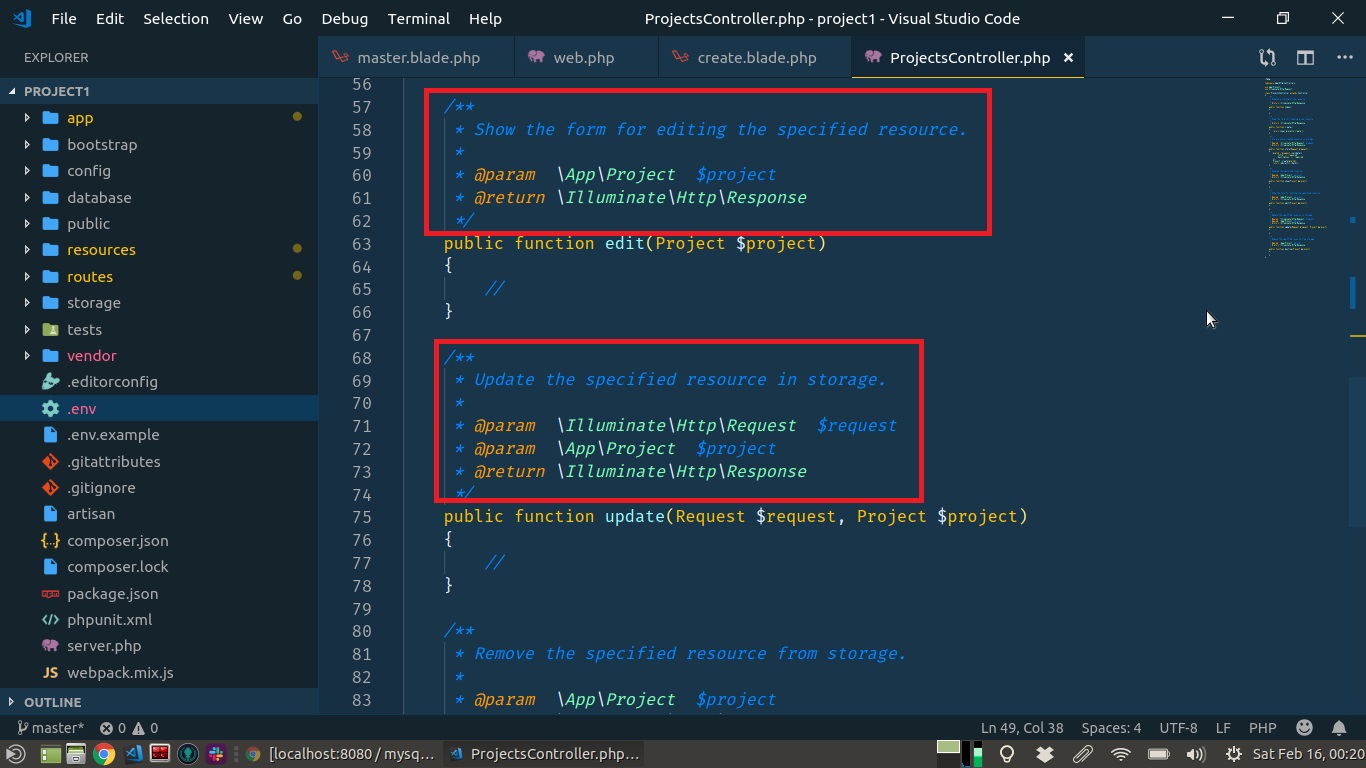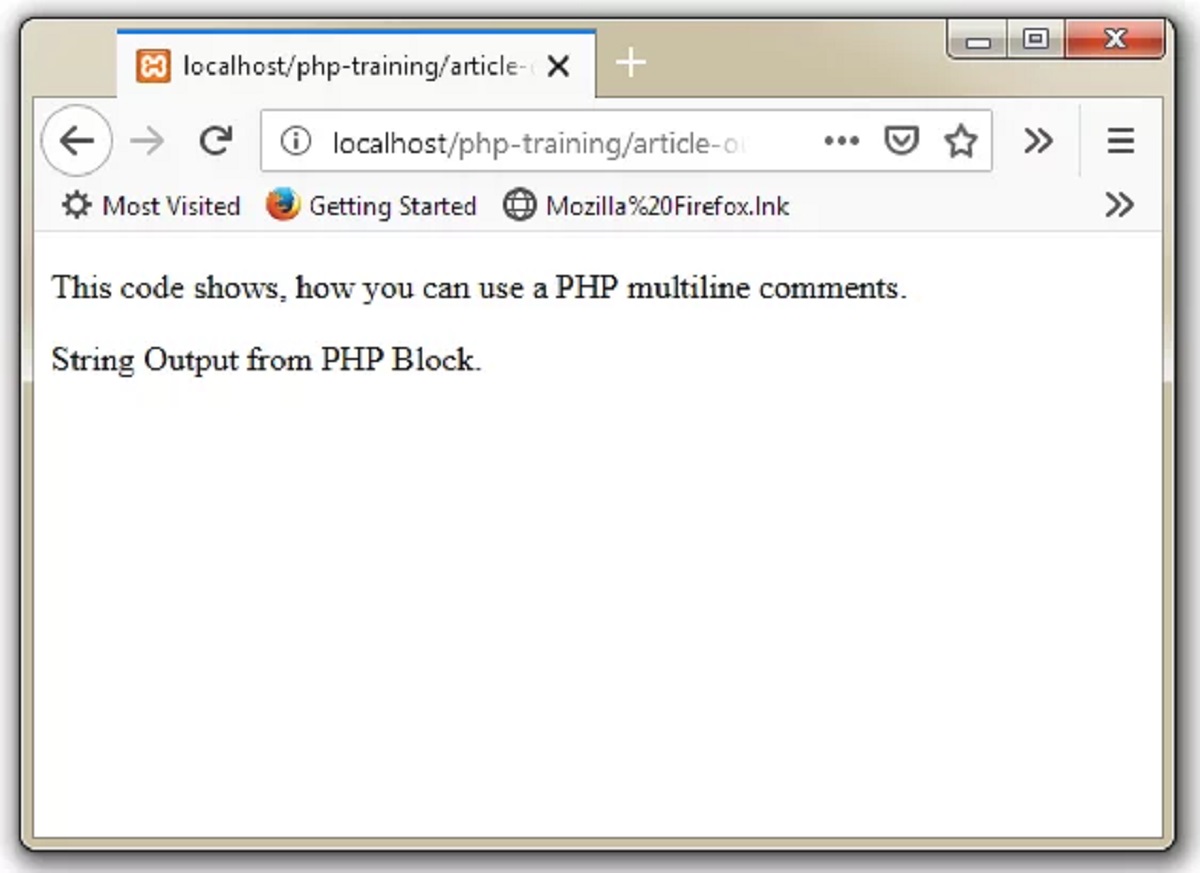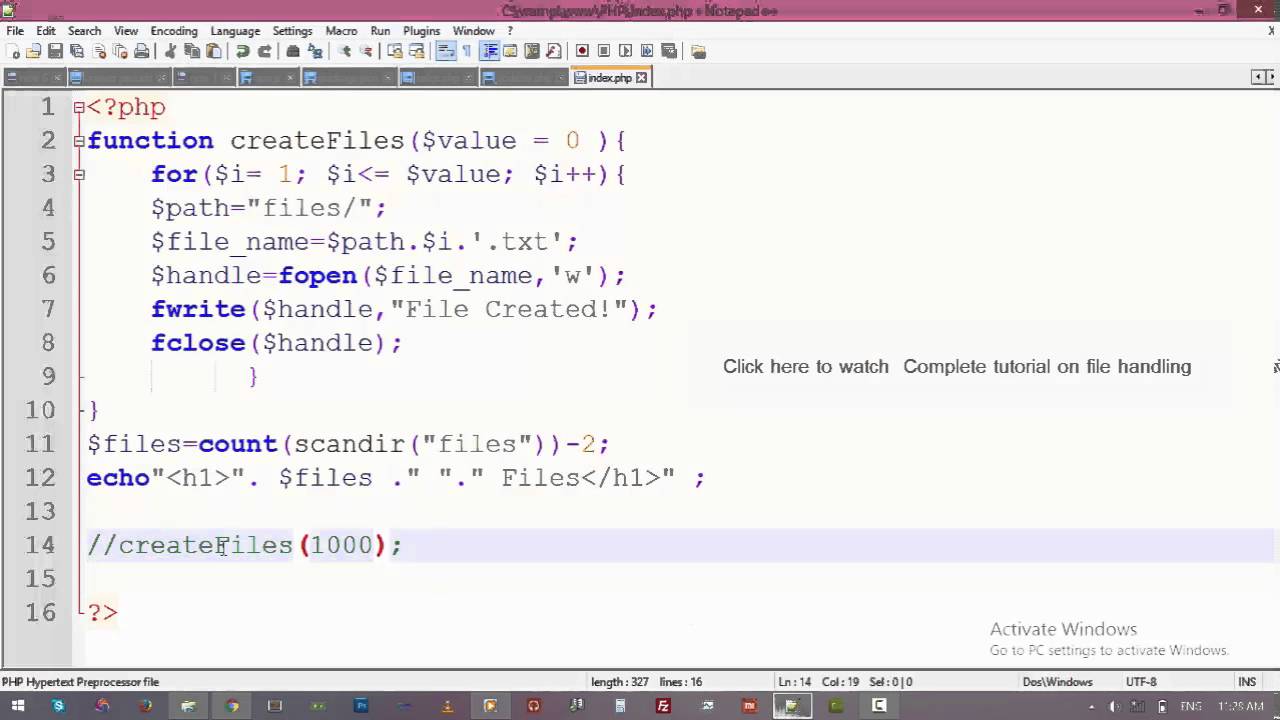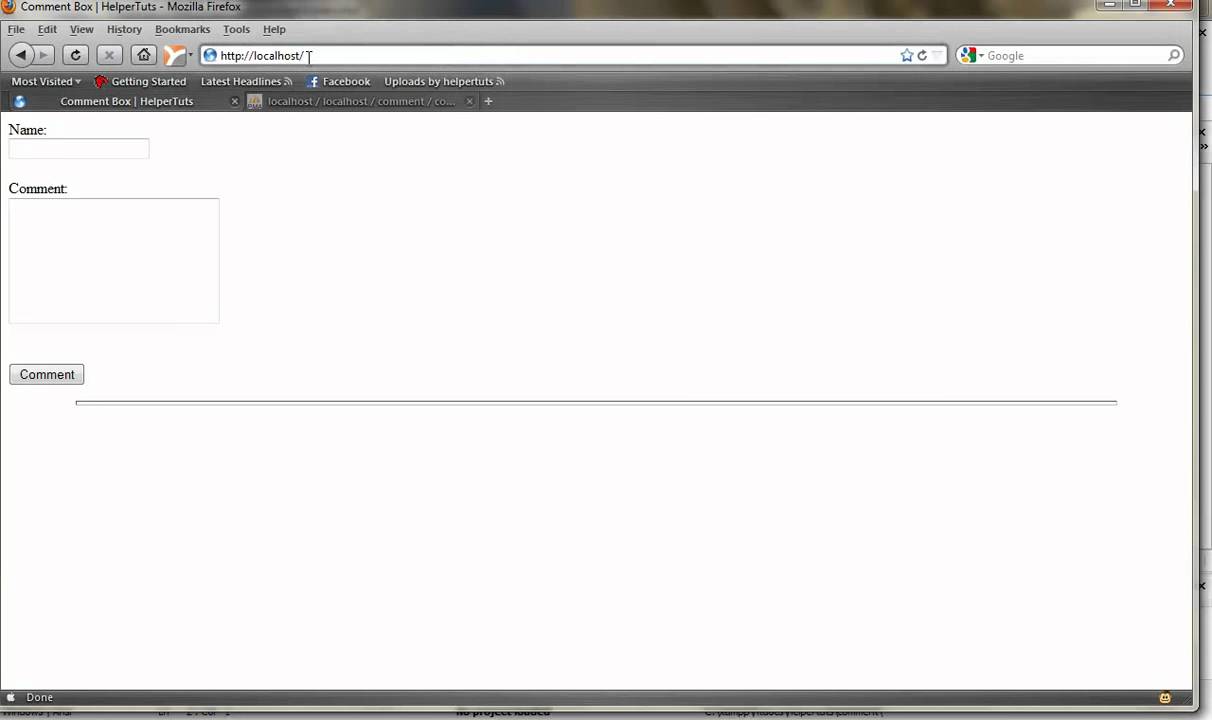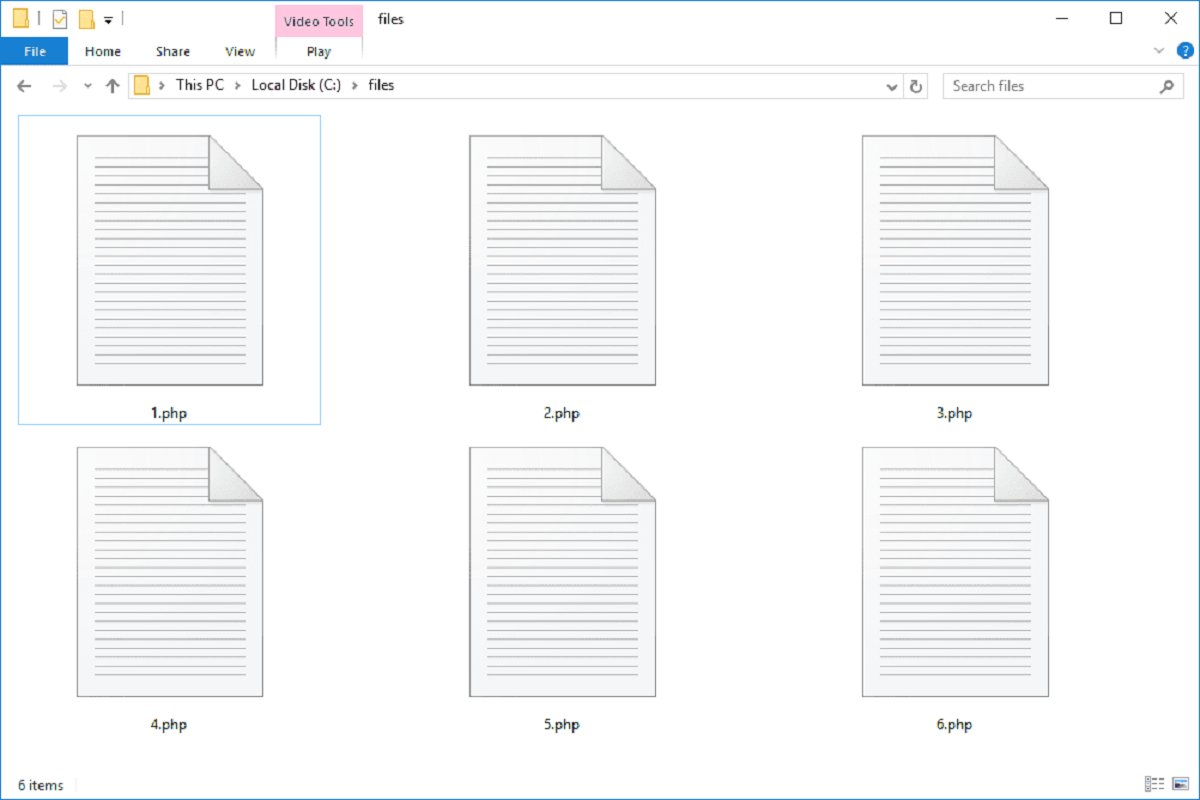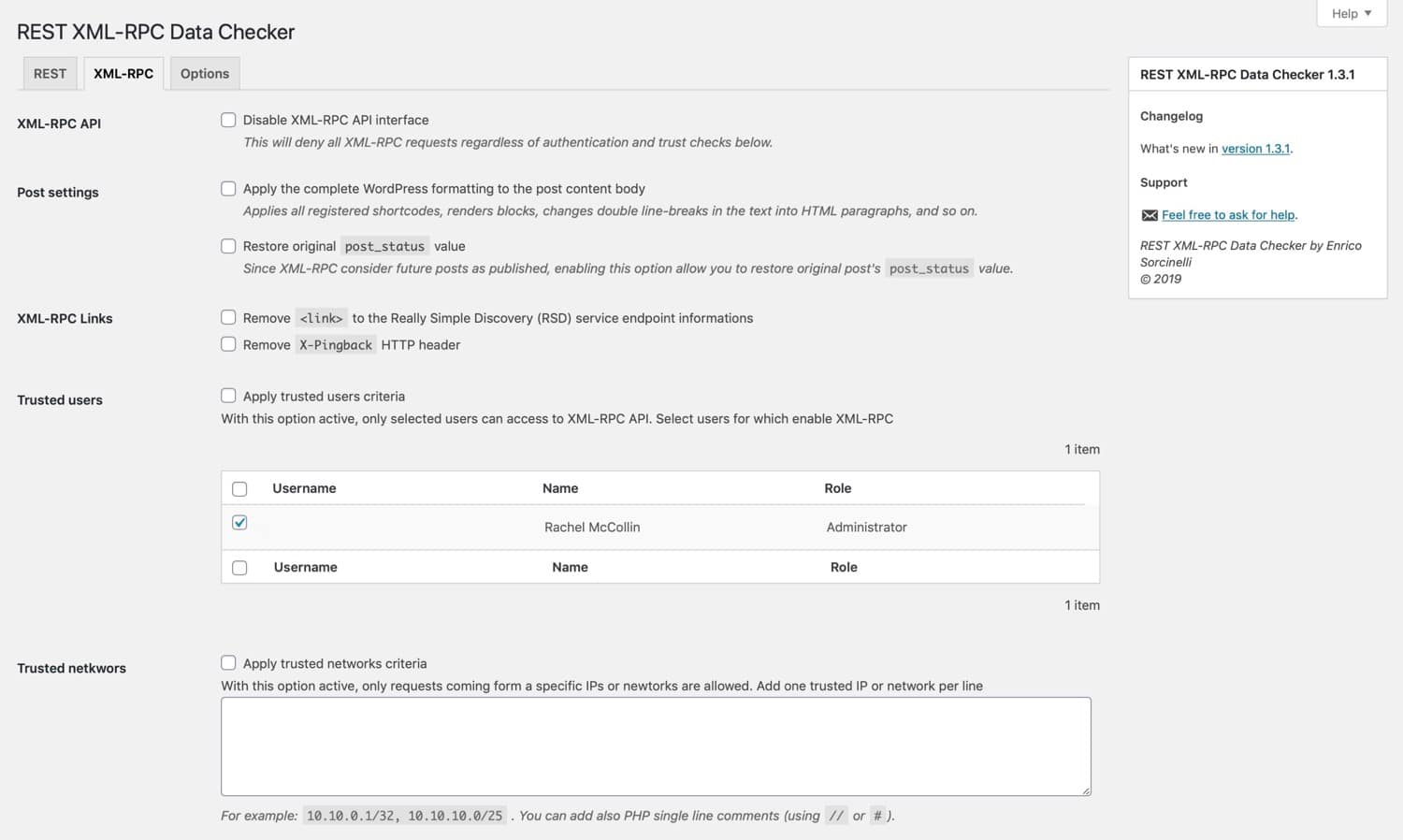Introduction
In the world of web development, commenting out code is a common practice. Commenting allows developers to add notes and explanations within their code, which can be incredibly helpful for both themselves and others who may work on the code later. When it comes to PHP code, the ability to comment out sections becomes essential.
Commenting out PHP code entails temporarily disabling or “commenting out” certain portions of the code so that they are ignored by the interpreter. This can be done for various reasons, such as debugging, testing different code variations, or simply adding informative comments for future reference.
In this article, we will explore the importance of commenting out PHP code and understand the different techniques for effectively implementing comments in PHP. We will cover single-line comments, multi-line comments, and conditional commenting. Additionally, we will discuss some best practices to ensure proper usage of commenting within your PHP code.
Whether you are a seasoned PHP developer or just starting your journey into the world of programming, understanding how to comment out code in PHP is a valuable skill that will greatly enhance your coding workflow.
So, let’s dive in and discover the various ways to effectively comment out PHP code!
What is Commenting Out PHP Code?
Commenting out PHP code refers to the practice of adding annotations or notes within the code that will be ignored by the PHP interpreter. These comments are primarily meant for developers to provide explanations, document important details, or disable certain sections of the code temporarily.
PHP supports two types of comments: single-line comments and multi-line comments.
Single-line comments allow you to comment out a single line of code. They are typically used for short comments or explanations that apply to a specific line. To create a single-line comment in PHP, you can start the line with a double forward slash “//”. Everything after the double forward slash will be treated as a comment and will not be executed by the PHP interpreter.
Multi-line comments, also known as block comments, are used when you need to comment out multiple lines or a larger section of code. In PHP, multi-line comments are enclosed within “/* */“. Anything between these delimiters is treated as a comment and will not be executed by the interpreter.
Commenting out code serves multiple purposes:
- Code Documentation: Comments allow developers to explain their code’s functionality in a human-readable format. It helps others (including future developers) understand the code’s purpose and how it works.
- Debugging and Troubleshooting: Comments can be used to temporarily disable specific lines or blocks of code to identify potential issues. By selectively commenting out code, developers can isolate problems and test alternative solutions.
- Code Enhancement and Experimentation: Comments provide a convenient way to modify or test different variations of code without deleting the original code. By saving multiple versions of commented-out code, developers can compare and experiment with different approaches.
Overall, commenting out PHP code enhances collaboration, improves code readability, and simplifies code maintenance. It enables developers to communicate their intentions, troubleshoot issues, and experiment with new ideas effectively.
Why Comment Out PHP Code?
Commenting out PHP code serves several important purposes and offers distinct benefits that help developers in their coding journey. Let’s explore some of the key reasons why commenting out PHP code is crucial:
1. Code Understanding and Collaboration: Comments provide valuable insights into the code’s purpose, logic, and expected behavior. By adding comments, developers make it easier for themselves and others to understand and modify the codebase. It encourages collaboration among team members and fosters a shared understanding of the code.
2. Debugging and Troubleshooting: Commenting out specific portions of code can be an effective debugging technique. By selectively disabling certain code blocks, developers can narrow down the root cause of an issue and isolate problematic sections. This makes the debugging process more manageable and efficient.
3. Code Maintenance and Refactoring: Comments play a vital role in maintaining and refactoring code. As projects evolve and requirements change, comments provide essential guidance for making modifications. They help developers identify areas that need improvement, refactor code, and ensure that changes are implemented correctly.
4. Code Reusability and Experimentation: Comments allow developers to temporarily disable code sections without deleting them. This flexibility permits the preservation of alternative code variations, enabling easy experimentation and comparison between different approaches. This promotes code reusability and helps developers explore new ideas without the fear of irreversibly losing their original code.
5. Documentation Generation: Comments serve as a valuable source for generating automatic documentation. Tools such as PHPDoc can extract comments and generate comprehensive documentation, greatly assisting in the development process.
6. Future Reference: Comments provide a historical record of the development process. They allow developers to recall their thought processes, design decisions, and important considerations made during the development phase. This can be particularly useful when revisiting the code after a long period or when handing off the project to another developer.
By commenting out PHP code, developers not only enhance the code’s readability and maintainability but also foster collaboration, facilitate debugging, and enable efficient code maintenance. It is a practice that significantly contributes to the overall quality and longevity of a project.
How to Comment Out PHP Code
Commenting out PHP code is a straightforward task that can be accomplished using single-line comments, multi-line comments, or conditional commenting. Let’s explore each of these techniques:
Option 1: Single-line Comments
Single-line comments allow you to comment out a single line of PHP code. To create a single-line comment, simply start the line with a double forward slash “//”. Everything after the double forward slash will be considered a comment and will not be executed by the PHP interpreter. For example:
// This is a single-line comment
$variable = "Hello, World!"; // Another comment
Option 2: Multi-line Comments
Multi-line comments, also known as block comments, are used to comment out multiple lines or a larger section of PHP code. In PHP, multi-line comments are enclosed within “/*” and “*/”. Anything between these delimiters will be treated as a comment and will not be executed. For example:
/*
This is a multi-line comment.
It can span across multiple lines.
All lines within the comment are ignored.
*/
/*
$variable = "This line is commented out";
echo "This line is also commented out";
*/
Option 3: Conditional Commenting
Conditional commenting is a technique where you selectively enable or disable sections of code based on certain conditions. It is often used for debugging purposes or for differentiating code variations. Conditional comments are implemented using “if” statements or other control structures. For example:
/*
if ($debugMode) {
// Code to execute in debug mode only
echo "Debug information";
}
*/
By changing the value of the “$debugMode” variable, you can control whether the code within the conditional comment is executed or commented out.
Remember, commenting out code should be done judiciously and in a manner that ensures readability and maintainability. It is crucial to add meaningful comments that provide insights into the purpose and functionality of the code to benefit both present and future developers.
Now that you understand the techniques for commenting out PHP code, let’s explore some best practices to ensure effective use of comments.
Option 1: Single-line Comments
Single-line comments are a simple and effective way to comment out a single line of PHP code. They are often used to add short comments or explanations that apply to a specific line of code. To create a single-line comment, start the line with a double forward slash “//”. Anything after the double forward slash will be treated as a comment and will not be executed by the PHP interpreter.
Single-line comments have the advantage of being concise and easy to implement. They are commonly used to provide clarity and context to code, making it easier for developers to understand and modify.
Here are some examples of using single-line comments in PHP:
$variable = 10; // Assign a value to the variable
// This line calculates the sum of two variables
$result = $variable1 + $variable2;
// Output the result
echo "The sum is: " . $result;
As you can see, single-line comments can be inserted after the code on the same line, or they can be placed on a separate line for better readability. In either case, the commented-out portion will be ignored during the execution of the PHP script.
While single-line comments are perfect for adding brief explanations or disabling a single line, they might not be suitable for commenting out larger sections of code. For that, we can use multi-line comments, which we will explore in the next section.
Remember, it is essential to use single-line comments judiciously and purposefully. Adding relevant comments helps in code comprehension, enables collaboration among developers, and simplifies the debugging and maintenance process.
Now that we understand single-line comments, let’s move on to exploring multi-line comments in PHP.
Option 2: Multi-line Comments
Multi-line comments, also known as block comments, allow you to comment out multiple lines or a larger section of PHP code. They are useful when you need to provide more extensive explanations or temporarily disable a considerable portion of code. In PHP, multi-line comments are enclosed within “/*” and “*/”. Everything between these delimiters will be treated as a comment and will not be executed by the PHP interpreter.
Here’s an example of using multi-line comments in PHP:
/*
This section of code calculates the average of an array.
*/
$numbers = [10, 20, 30, 40, 50];
/*
$sum = array_sum($numbers);
$count = count($numbers);
$average = $sum / $count;
echo "The average is: " . $average;
*/
echo "This line is not commented out and will be executed.";
In this example, the lines within the multi-line comment are not executed by the PHP interpreter. It allows you to temporarily disable the code while still keeping it in the file for reference or future use.
It’s important to note that multi-line comments can span multiple lines and can be placed anywhere within the code block, as long as they are enclosed between “/*” and “*/”. This flexibility allows for commenting out specific lines, multiple lines, or even entire PHP functions or classes.
Multi-line comments are invaluable when you need to provide detailed explanations, disable sections of code for debugging purposes, or temporarily remove code without deleting it. They help improve code readability, facilitate collaboration, and can easily be uncommented when needed.
Now that we’ve explored multi-line comments, let’s move on to the next option: conditional commenting in PHP.
Option 3: Conditional Commenting
Conditional commenting in PHP allows you to selectively enable or disable specific sections of code based on certain conditions. This technique is often used for debugging purposes or when you want to differentiate code variations.
The most common way to implement conditional commenting in PHP is by using “if” statements or other control structures. By evaluating a condition, you can determine whether a particular block of code should be executed or commented out.
Here’s an example of conditional commenting in PHP:
$debugMode = true;
if ($debugMode) {
// Code to execute in debug mode
echo "Debug information";
} else {
// Code to execute in production mode
echo "Production code";
}
In this example, the code within the “if” statement will only be executed if the `$debugMode` variable is true. If the variable is false, the code inside the “else” block will be executed instead. By simply changing the value of the `$debugMode` variable, you can easily switch between the debug and production code.
Conditional commenting can be instrumental in debugging complex applications or handling different environments (e.g., development, staging, production). It allows you to isolate and selectively enable specific code blocks for debugging or testing purposes, without affecting the overall functionality of the application.
By utilizing conditional commenting, you can have greater control over the execution of different code variations, simplify the debugging process, and create more robust and flexible applications.
Now that we’ve explored the three options for commenting out PHP code – single-line comments, multi-line comments, and conditional commenting – let’s move on to discussing some best practices for effective commenting in PHP.
Best Practices for Commenting Out PHP Code
Commenting out PHP code is not just about adding notes and explanations; it’s also about following best practices to ensure that your comments are effective, clear, and maintainable. Here are some best practices to consider when commenting out PHP code:
1. Write Clear and Concise Comments: Make sure your comments are easy to understand and provide clear explanations of the code’s purpose or functionality. Use plain language and avoid technical jargon, if possible. Keep your comments concise and to the point, focusing on the most important information.
2. Use Comment Headers: For larger sections of code or functions, use comment headers to provide an overview of what that section does. This helps in quickly understanding the purpose and functionality of the code without having to go through each line.
3. Comment as You Code: Try to comment as you write your code, rather than leaving it for later. This way, the comments will accurately reflect the current state of the code and help you document your thought process and intentions more effectively.
4. Update or Remove Outdated Comments: As your code evolves and changes, remember to review and update your comments accordingly. Outdated comments can be misleading and create confusion for future developers. If a comment no longer applies, either update it to reflect the current state of the code or remove it altogether.
5. Avoid Commenting Obvious Code: Reserve your comments for lines or sections of code that are not self-explanatory. Avoid commenting obvious code that is already clear from its syntax and naming conventions. Over-commenting can clutter the code and make it harder to read.
6. Use Proper Grammar and Spelling: While comments may not affect the functionality of the code, using proper grammar and spelling demonstrates professionalism and attention to detail. Clear and well-written comments contribute to the overall readability and maintainability of your codebase.
7. Be Consistent: Maintain consistency in your commenting style, such as using the same indentation and commenting conventions. This makes your code more readable and reduces cognitive load for developers working on the code.
8. Use Comments for Debugging: Commenting out code can be an effective technique for debugging. Use comments to temporarily disable code sections that you suspect might be causing issues. This allows you to isolate and test specific parts of your code easily.
9. Document Function and Method Signatures: When defining functions or methods, use comments to document the parameters, return types, and overall functionality. This helps developers understand how to use the function and what to expect from it.
10. Regularly Review and Refactor Comments: Take the time to review and refactor your comments alongside your code. As you refactor your code, ensure that the comments accurately reflect the changes made. Remove any redundant or unnecessary comments to keep your codebase clean and maintainable.
By following these best practices, you can maintain a well-documented and easily understandable codebase, making it easier for yourself and other developers to work with and maintain the code in the long run.
Now that we’ve covered best practices for commenting PHP code, let’s wrap up and summarize what we’ve learned.
Conclusion
Commenting out PHP code is an essential skill for developers as it enhances code readability, facilitates collaboration, and simplifies the debugging and maintenance process. By adding comments, developers can provide explanations, document important details, and temporarily disable code sections to improve the overall quality of their codebase.
In this article, we explored the various techniques for commenting out PHP code. We learned about single-line comments, which allow us to comment out a single line using “//”, and multi-line comments, which help us comment out larger sections using “/* */”. We also discussed conditional commenting, which enables us to selectively enable or disable code blocks based on specific conditions.
Throughout the article, we emphasized best practices for effective commenting in PHP. These practices include writing clear and concise comments, documenting function and method signatures, avoiding over-commenting, and regularly reviewing and updating comments to keep them relevant and accurate.
By following these best practices and understanding the different options for commenting out PHP code, developers can significantly improve code comprehension, facilitate collaboration, and streamline the debugging and maintenance process. Well-commented code not only benefits the developers themselves but also ensures the long-term sustainability and scalability of projects.
So, as you write your PHP code, remember the importance of commenting and make it a habit to add meaningful and informative comments. Your future self and fellow developers will thank you for it.







